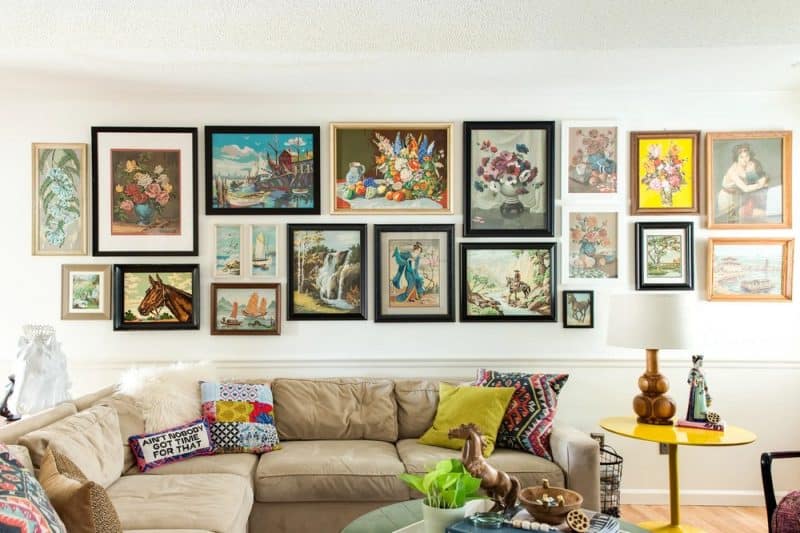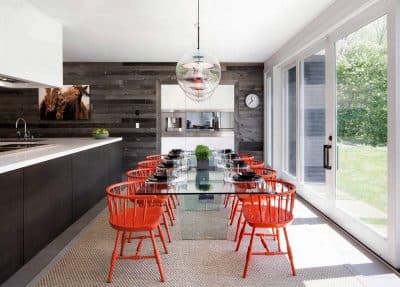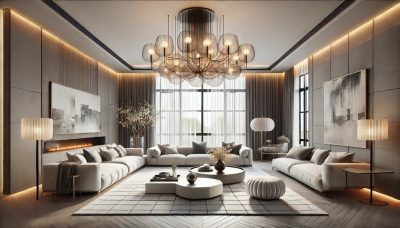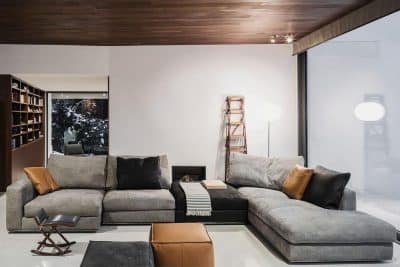
Artful home décor is about more than just filling spaces with objects; it’s about curating environments that resonate with personality, style, and artistic expression. This approach to home decoration leverages artwork and aesthetic elements to create spaces that are not only visually appealing but also emotionally resonant and uniquely personal. In this expanded guide, we delve into sophisticated strategies and detailed advice to help you elevate your living spaces through the power of artful home décor.
The Essence of Artful Home Décor
The Role of Color and Texture
In artful home décor, color and texture play pivotal roles. They are the foundational elements that can dictate the mood and tone of a room. Color influences emotions and can dramatically alter perceptions of space. For example, cool tones like blue and green evoke calmness and are ideal for bedrooms or studies, while warmer tones such as red and orange energize a space, making them great choices for living areas and kitchens.
Texture adds depth and interest. Layering different textures, from smooth and sleek modern metals to rough and rustic woods, can enhance the tactile quality of a space. Textiles in various finishes contribute to a rich sensory experience—velvety throws, silky cushions, and coarse rugs each add distinct touches to rooms.
Integrating Art with Interior Design
Artful home décor requires seamless integration of art within the interior design framework. Each piece of art should feel as though it belongs, complementing the space without overwhelming it. To achieve this, consider the scale and placement of artworks carefully. Large statement pieces can define a room, while smaller, subtle works might act as accents that complement the overall theme.
Creating Dynamic Displays
Dynamic displays are central to artful home décor. This involves more than hanging a painting or placing a sculpture; it involves creating a narrative or a visual dialogue between the art and its surroundings. Gallery walls, for instance, can tell a story through a collection of smaller pieces. Interactive installations, like a sculpture that casts interesting shadows throughout the day, bring life and movement into the space.
Advanced Techniques in Artful Home Décor
Selecting the Right Art for Your Space
Choosing the right art involves more than just selecting pieces you love; it’s about finding art that fits the scale, style, and aesthetic of your space. Consider the existing décor and color palette of your room. Art should complement these elements, serving as a harmonious addition rather than a disruptive presence. Whether your home features minimalist modern designs or eclectic, vintage arrangements, the artwork should enhance the existing design narrative.
Balancing Scale and Placement
The impact of artwork in a room heavily depends on its scale and placement. An oversized painting in a small room can be overwhelming, while a too-small piece may go unnoticed in a large area. Striking the right balance requires careful consideration of wall size and room dimensions. Placement is equally crucial—art should be hung at an optimal height, generally at eye level, and in relation to furniture and other room features to create visual harmony and draw attention where desired.
Creating a Focal Point with Art
Art can serve as a dynamic focal point in any room, guiding the viewer’s gaze and setting the tone for the space. Choose a standout piece—be it a vibrant painting, a large sculpture, or an intricate installation—and position it strategically. Often placed over a mantle, sofa, or bed, or commanding its own dedicated wall, this focal piece can dictate the arrangement and flow of the rest of the room. Enhancing this focal point with spotlighting or thoughtful architectural details can amplify its impact, making it not just part of the room but the centerpiece of your design.
Leveraging Lighting
Lighting is a powerful tool in artful home décor. The right lighting can transform the appearance of art, emphasizing colors and details that might otherwise go unnoticed. Incorporate a variety of lighting sources—ambient, task, and accent lighting—to highlight your artworks effectively. Consider adjustable lighting systems that can change the mood of the room depending on the time of day or the occasion.
Curating a Personal Gallery
Building a personal gallery involves more than selecting pieces that simply look good. It’s about choosing art that speaks to you and reflects your personal journey or interests. This could include a mix of high art, street art, personal photographs, and even children’s artwork. Each piece should contribute to a cohesive yet diverse visual experience that enhances every visit to the room.
Utilizing Art Reproductions
Art reproductions can play a significant role in artful home décor by making iconic works more accessible and affordable. High-quality replicas of famous paintings can evoke the same feelings and aesthetic appeal as the originals. For instance, a reproduction of “The Scream” by Edvard Munch can create a dramatic impact in a contemporary living room or study. These reproductions are often of high quality and can mimic the look and feel of the original pieces, making art accessible to a broader audience. When selecting reproductions, consider the framing and placement—these elements can elevate the piece, integrating it seamlessly with original artworks and your overall home décor.
Incorporating Personal Art and Photographs
Personalizing your space with your own art or cherished photographs adds unique character and intimacy to your home. These pieces can serve as conversation starters, showcasing personal stories or memorable moments. Whether displayed on a gallery wall, in traditional frames, or through more creative installations, personal art creates a space that feels distinctly yours, reflecting individual experiences and aesthetics.
Incorporating Technology
In modern homes, technology and art can work hand in hand to create dynamic and responsive environments. Digital frames that display rotating artworks, integrated sound systems that complement visual art with audio, and smart lighting that adjusts based on the artwork displayed are all examples of how technology can enhance artful home décor.
Conclusion
Artful home décor is a thoughtful process of blending art, design, and personal expression to create spaces that are not only beautiful but also meaningful. By applying these advanced techniques and principles, you can transform your home into a vibrant and expressive sanctuary that reflects your personal taste and enhances your daily living experience. Remember, the key to mastering artful home décor lies in the thoughtful integration of all elements—art, furniture, textures, and technology—to create a harmonious and inviting space.








